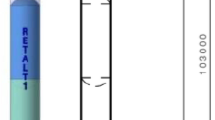Abstract
The mathematical model of a far-distance cooperative rendezvous between two spacecraft in a non-Keplerian orbit was established. Approximate global optimization was performed by a type of hybrid algorithm consisting of particle swarm optimization and differential evolution. In this process, the double-fitness function was established according to the objective function and the constraints; the double-fitness function was used to enable a better choice between the solutions obtained by the two algorithms at every iteration. In addition, the costate variables obtained were set as the initial values of the sequential quadratic programming to greatly increase the possibility of finding the approximate global optimal solution. After performing the calculations and simulations, it was concluded that the fuel required for orbiting was not influenced by the initial positions of the two spacecraft if the initial orbits of the two spacecraft were determined. However, the time consumption is strongly influenced in this situation.














Similar content being viewed by others
Abbreviations
- a :
-
semimajor axis
- e :
-
eccentricity
- i :
-
orbit inclination angle
- I sp :
-
thruster-specific impulse
- J :
-
performance index
- m 0 :
-
initial mass of the satellite
- R e :
-
equator radius
- u :
-
ratio of the amplitude of the actual thrust relative to T max
- α :
-
unit direction vector
- β :
-
pitch angle
- θ :
-
true anomaly
- Φ :
-
shooting equation
- γ :
-
yaw angle
- λ :
-
costate
- μ :
-
gravitational constant of the earth
- ω :
-
perigee amplitude
- Ω:
-
longitude ascending node
References
Massioni, P., Keviczky, T., Gill, E., Verhaegen, M.: A Decomposition-Based Approach to Linear Time-Periodic Distributed Control of satellite Formations [J]. IEEE Trans. Control. Syst. Technol. 19(3), 481–492 (2011)
Jingrui, Z., Shuge, Z., Yongzhao, Y.: Characteristics Analysis for Elliptical Orbit Hovering Based on Relative Dynamics [J]. IEEE Trans. Aerosp. Electron. Syst. 49(4), 2742–2750 (2013)
Vinh, N.X., Lu, P., Howe, R.M., Gilbert, E.G.: Optimal interception with time constraint [J]. J. Optim. Theory Appl. 66(3), 361–390 (1990)
Renzhang, Z.: Rendezvous and Docking Techniques of Spacecraft[M], p 10. National Defense Industry Press, Beijing (2007)
Prussing, J.E.: A Class of optimal tow-impulse rendezvous using multiple-revolution Lambert solutions [J]. J. Astronaut. Sci. 48(2-3), 131–148 (2000)
Carter, T., Humi, M.: A new approach to impulsive rendezvous near circular orbit [J]. Celest. Mech. Dyn. Astron. 112(4), 385–426 (2012)
Tang, G.J., Luo, Y.Z., Li, H.Y.: Optimal robust linearized impulsive rendezvous [J]. Aerosp. Sci. Technol. 11(7-8), 563–569 (2007)
dos Santos, D.P.S., de Almeida Prado, A.F.B., Colasurdo, G.: Four-impulsive rendezvous maneuvers for spacecrafts in circular orbits using genetic algorithms [J]. Math. Probl. Eng. 2012(493507), 16 (2012)
Coverstone-Carroll, V., Prussing, J.E.: Optimal cooperative power-limited rendezvous between neighboring circular orbits [J]. J. Guid. Control. Dyn. 16(6), 1045–1054 (1993)
Coverstone-Carroll, V., Prussing, J.E.: Optimal cooperative power-limited rendezvous between coplanar circular orbits [J]. J. Guid. Control. Dyn. 17(5), 1096–1102 (1994)
Crispin, Y., Seo, D.: Rendezvous between two active spacecraft with continuous low thrust [M]. Advances in Spacecraft Technologies, 585–596 (2011)
Dutta, A., Tsiotras, P.: Hohmann-Hohmann and Hohmann-phasing cooperative rendezvous maneuvers [J]. J. Astronaut. Sci. 57(1-2), 393–417 (2009)
Bertrand, R., Epenoy, R.: New smoothing techniques for solving bang–bang optimal control problems—numerical results and statistical interpretation [J]. Optimal Control Applications and Methods 23(4), 171–197 (2002)
Sun, L., Huo, W.: Robust adaptive control for spacecraft cooperative rendezvous and docking[C]. In: 2013 IEEE 52nd Annual Conference on Decision and Control (CDC). IEEE, pp 5516–5521 (2013)
Kennedy, J., Eberhart, R.: Particle swarm optimization [C]. In: Proceedings of IEEE International Conference on Neural Networks, pp 1942–1948. Piscataway, NJ (1995)
Eberhart, R., Kennedy, J.: A new optimizer using particle swarm theory [C]. In: Proceedings of the International Symposium on Micro Machine and Human Science, Piscataway, NJ, USA: IEEE, pp 39–43 (1995)
Pontani, M., Conway, B.A.: Particle swarm optimization applied to space trajectories [J]. J. Guid. Control. Dyn. 33(5), 1429–1441 (2010)
Pontani, M., Ghosh, P., Conway, B.A.: Particle swarm optimization of multiple-burn rendezvous trajectories [J]. J. Guid. Control. Dyn. 35(4), 1192–1207 (2012)
Price, K.V.: Differential evolution: a fast and simple numerical optimizer [C] (1996)
Storn, R., Price, K.: Differential evolution–a simple and efficient heuristic for global optimization over continuous spaces [J]. J. Glob. Optim. 11(4), 341–359 (1997)
Olds, A.D., Kluever, C.A., Cupples, ML.: Interplanetary mission design using differential evolution [J]. J. Spacecr. Rocket. 44(5), 1060–1070 (2007)
Das, S., Abraham, A., Konar, A.: Particle swarm optimization and differential evolution algorithms: technical analysis, applications and hybridization perspectives [M]. Advances of Computational Intelligence in Industrial Systems. In: Liu, Y., et al. (eds.) Studies in Computational Intelligence, pp 1–34. Springer, Germany (2008)
Zhang, C., Ning, J., Lu, S., et al.: A novel hybrid differential evolution and particle swarm optimization algorithm for unconstrained optimization [J]. Oper. Res. Lett. 37(2), 117–122 (2009)
Liu, H., Cai, Z., Wang, Y.: Hybridizing particle swarm optimization with differential evolution for constrained numerical and engineering optimization [J]. Appl. Soft Comput. 10(2), 629–640 (2010)
Powell, D., Skolnick, M.: Using genetic algorithms in engineering design optimization with nonlinear constraints [C] (1993)
Kim, Y.H., Spencer, D.B.: Optimal spacecraft rendezvous using genetic algorithms [J]. J. Spacecr. Rocket. 39(6), 859–865 (2002)
Luo, Y.Z., Tang, G.J., Li, H.: Optimization of multiple-impulse minimum-time rendezvous with impulse constraints using a hybrid genetic algorithm[J]. Aerosp. Sci. Technol. 10(6), 534–540 (2006)
Dos Santos, D.P.S., Prado, A F.B.A.: Minimum Fuel Multi-Impulsive Orbital Mane
Author information
Authors and Affiliations
Corresponding author
Rights and permissions
About this article
Cite this article
Feng, W., Han, L., Shi, L. et al. Optimal Control for a Cooperative Rendezvous Between Two Spacecraft from Determined Orbits. J of Astronaut Sci 63, 23–46 (2016). https://doi.org/10.1007/s40295-015-0079-4
Published:
Issue Date:
DOI: https://doi.org/10.1007/s40295-015-0079-4




